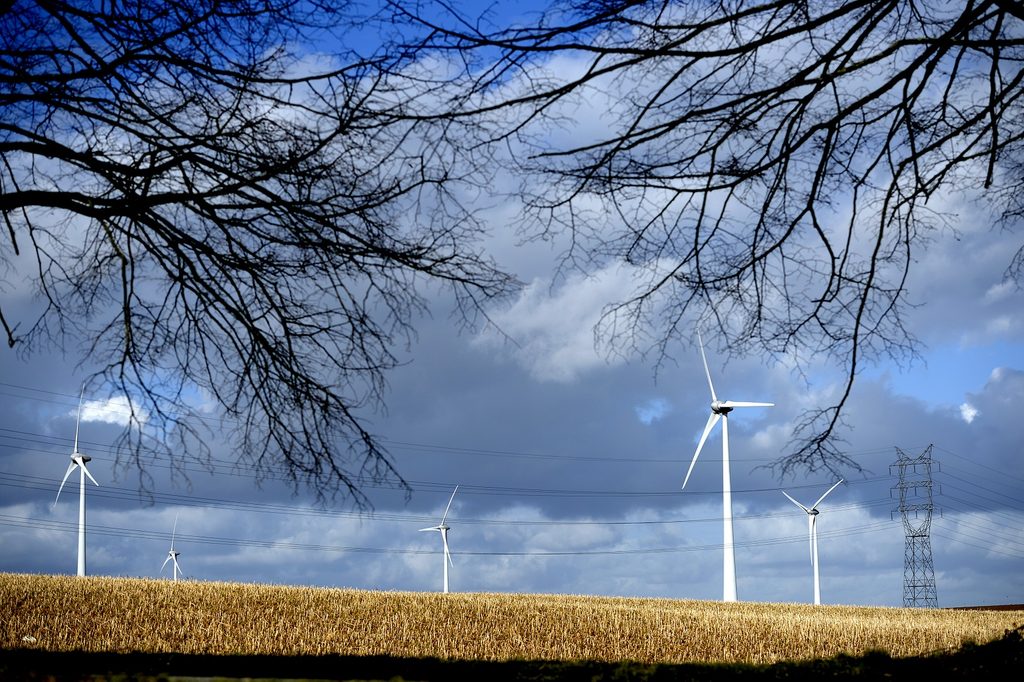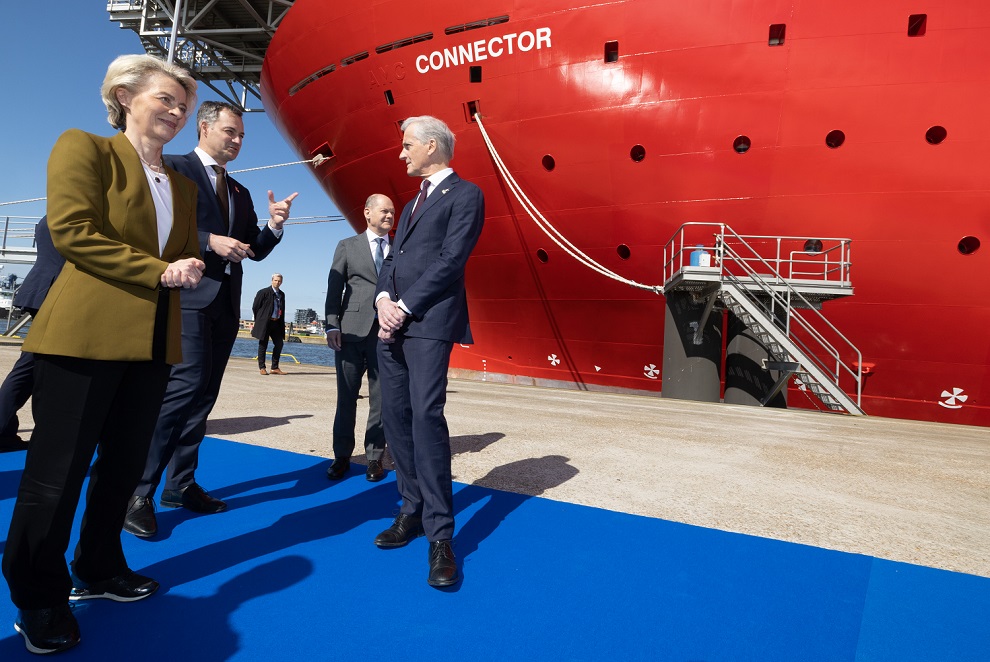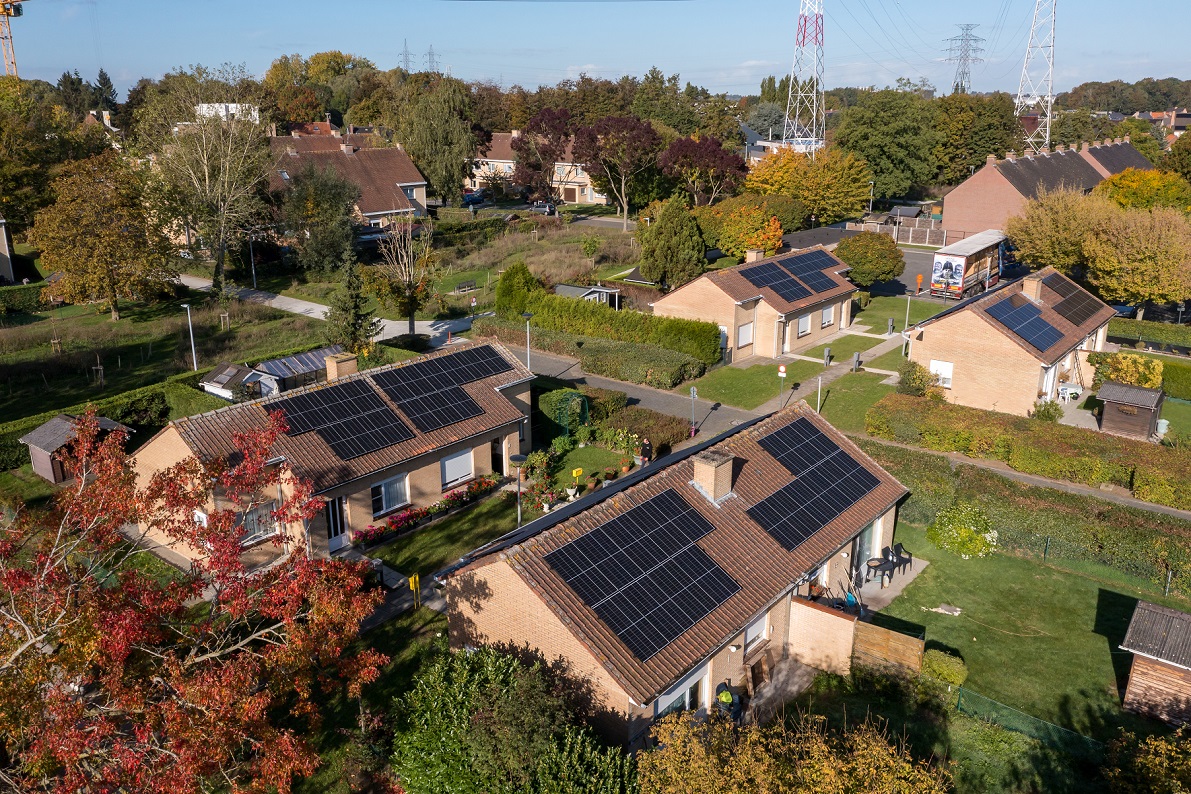In its 2023 country report published in May, the European Commission was blunt about Belgium’s prospects for the green transition. “Belgium faces significant challenges in moving to a green and climate-resilient economy,” it said, citing the country’s “strong reliance on imported fossil fuels” as a particular block to climate neutrality by 2050.
Progress is being made, but, as usual in Belgian policymaking, each region is following its own rules, adding a little bit more complication to an economic and social transition that is already challenging enough.
In 2022, over 47 percent of Belgium’s electricity came from nuclear power and 27 percent from gas, according to data from Elia, the country’s transmission system operator. Despite the brief lease of life for Belgium’s nuclear power plants last year, policymakers now agree that this is not a viable long-term energy source. As for Belgium’s gas, it all imported as it has no natural gas resources. Russia accounted for as much as six percent of imports before it invaded Ukraine, but the lion’s share of Belgium’s gas comes from the Netherlands, Norway and Qatar.
Onshore and offshore wind, solar and biogas made up most of the remaining share of the country’s electricity supply last year. Wind and solar energy production increased to provide 17.4 terawatt hours (TWh) of electricity compared with 15.2 TWh in 2021. For context, Belgium’s total electricity consumption in 2022 was 81.7 TWh.
The rise in wind and solar is not massive, but it means that in 2022, for four percent of the year, half of Belgium’s consumption needs were covered by renewables — double the figure for 2021, Elia says.
However, solar industry is the “star” of the renewables show everywhere, according to Fatih Birol, executive director of the Paris-based International Energy Agency (IEA). More than €1 billion a day is expected to go into solar investments globally in 2023, totalling €350 billion for the year, he said when the IEA published its flagship World Energy Investment 2023 report in May. This growth trend is the same in Belgium.
Installed solar power grew by 35 percent across the country in 2022, compared to a 14 percent increase in installed onshore wind and a stagnant offshore wind industry. In the sunniest months of 2022, solar supplied as much as 15 percent of Belgium’s electricity. By contrast, onshore wind accounted for five percent of all electricity generated in Belgium last year and offshore wind for 7.5 percent — no increase in offshore wind farm production capacity is expected before 2027.
Low blows
Belgium was far from alone with its lack of offshore wind growth, with no investment decisions taken on any offshore wind farm in Europe in 2022. In April, a host of wind companies operating in Europe blamed this sluggish situation on a 40 percent rise in input costs in just two years, mainly due to supply chain constraints and high inflation.

Windmills in Pont-a-Celles
The companies are, however, hopeful that change is in the offing. Their message was published to coincide with a summit held by eight North Sea countries — Belgium, Denmark, France, Germany, Ireland, the Netherlands, Norway and the UK — plus landlocked Luxembourg, in the windy Belgian seaside resort of Ostend aimed at supercharging European offshore wind capacity.
The resulting Ostend Declaration committed the countries to raise their offshore wind capacity to a massive 300 gigawatts (GW) by 2050. This compares to an installed capacity of 2,262 MW for offshore wind energy in the Belgian North Sea.
Ostend followed a first, relatively low-key, North Sea Summit in 2021. But Russia’s invasion of Ukraine and the subsequent squeeze on gas to Europe, turned this year’s meeting into a much grander affair with French President Emmanuel Macron, the German Chancellor Olaf Scholz, and the European Commission President Ursula von der Leyen, as well as the prime ministers of Belgium, the Netherlands, Ireland, Denmark, Luxembourg and Norway all in attendance (the UK was the only country not to be represented by a head of government, sending instead Energy Security Minister Grant Shapps).
In addition to setting offshore wind targets for each country, except Luxembourg, the nine agreed to work together on interconnections and hydrogen production. Electricity produced by the project would not simply be used to keep the lights on, but also to produce renewable hydrogen, which energy experts agree will be needed to decarbonise industrial sectors like chemicals, steel and cement, and heavy transport like shipping.
Split decisions
Offshore wind, as the presence of Belgian Prime Minister Alexander de Croo in Ostend made clear, is a competence of the federal government. Onshore wind and solar, like other aspects of the energy transition, are, however, the responsibility of the regional governments, with Flanders, Wallonia and Brussels each drawing up its own energy and climate plan.

Belgian Prime Minister Alexander De Croo, European Commission President Ursula Von der Leyen, German Chancellor Olaf Scholz and Norway's Prime Minister Jonas Gahr Store at the North Sea Summit in Ostend
One notable difference in the latest editions of these plans is the refusal by Flanders to recognise the European Commission’s 2020 decision to raise the 2030 EU emissions reduction target to at least 55 percent compared to 1990 levels. Belgium, like every EU country, saw its goal shoot up in line with this change. Instead of a 35 percent decrease over the next seven years, Belgium must now slash its emissions by 47 percent. Flanders, however, is sticking with the EU executive’s previous overall 40 percent reduction – while the Brussels region and Wallonia have duly adjusted their plans in line with the latest targets.
On the onshore wind front at least, Flanders can do more, says Maarten Dedeyne, director of the Flemish Wind Energy Association (VWEA). “Positive initiatives have been taken at the political level in recent months that should make it possible to generate more onshore power in the coming years,” he says. “Flanders can be more ambitious. Ambitions can never be high enough for onshore wind energy. We need lots of it to decarbonise further.”
Eric Monami, energy adviser with Edora, a federation of companies working on the energy transition in Belgium, agrees progress is being made, but is frustrated that politicians are not fully grasping the renewable energy mettle and suggests all regions could do more. "The latest Regional Air Climate Energy Plan 2023-2027 for Brussels is a good start,” he says. “But much more could be done if policymakers were focused on producing as much renewables locally as possible, for example, by being much more ambitious on rooftop solar."
Monami would like to see higher targets to reap the full potential of the capital’s rooftops and a much more concerted effort to integrate solar panels systematically into the construction of new buildings and renovation projects.
Sunblock
Léopold Coppieters is the co-founder of Skysun, a company that provides the investment for solar panels to be installed on the roofs of offices or car parks and then sells the clean electricity back to companies and, if there is too much of it, to the grid. “Companies save on carbon and electricity,” Coppieters says. While the different energy transition regulations in the different Belgian regions aren’t stopping his company from growing, they are not making life any easier. After working in Belgium for six years, the company has just opened its first office in France. “It is almost mind-blowing that anything true in Paris is also true in Strasbourg,” says Coppieters wryly. “Once the rules of the game are known it is much easier to play.”

The largest Walloon solar panel installation, in Braine l'Alleud: a field of photovoltaic panels of 19 hectares
Skysun would like to expand from rooftop solar and start installing solar panels on farmland, investing in projects Coppieters believes will generate clean energy and high agricultural yields and increase biodiversity. But turning this theory into practice is difficult in Belgium, he says: “In Flanders and Wallonia, we have lots of problems getting permits.” Coppieters says the opposition is political rather than from residents close to where projects would be sited.
“Locals are interested in our projects,” he says. “We do lots of work ahead of a collaboration and look at what would be the best solution, for example, to mitigate aesthetics and open up the project to crowd lending, so people can invest and get a return.” He says people generally come to their meetings to block a project, but “leave happy” and even write “letters of encouragement” once Skysun applies for a permit.
The problem, suggests Coppieters, is a lack of legislation across Wallonia and Flanders around community energy projects. He says solar projects linked to farming are happening in the Netherlands, “which has a higher density of people” and in France “which has legislation”. In Belgium, though, decisions on such projects are largely “subjective not objective”, made depending according to the whim of individual politicians, he suggests.
Regulatory gridlock
VWEA’s Dedeyne agrees that politicians, rather than the general public, are stymying greater ambition. “Belgium is a densely populated region, making it not easy to develop large wind farms onshore. But there is still lots of potential,” he says. Dedeyne blames “radar and aviation-related restrictions” for holding back the development of onshore wind energy in much of Belgium, even though workarounds are available. “Technical solutions could be implemented that would increase aviation safety and make the development of wind energy possible at the same time,” he says. He urges policymakers to “rapidly deploy these solutions”.
Dedeyne says the public is generally supportive of onshore wind. “Every year, the Flemish Energy and Climate Agency organises a survey and year after year, we see that 65 to 70 percent of citizens are positive or neutral towards wind energy,” he says. “Only five percent of people in Flanders have negative feelings towards wind turbines”. Dedeyne admits, though, that this five percent is “very vocal.”
Dedeyne believes change is coming. “The energy transition and further electrification of our society will accelerate in the coming years,” he says. But it will require better cooperation and coordination between the different policy levels. “Our economic activity and our prosperity depend on it,” he says.
Creating such synergy in Belgium is not easy, says Edora’s Monami, since “the federal government has no way of telling the regional governments what they should do.” He says the energy transition is too important to fall victim to internecine rows. “We should have a cooperation agreement that can move the transition forward faster and allow the federal government to engage directly with the regional administrations to get them to meet agreed goals,” he says.
Such an agreement would, however, not let the federal government off the hook, he insists, as it would still be responsible for certain cross-cutting areas such as offshore wind, electricity infrastructure and carbon taxes.

